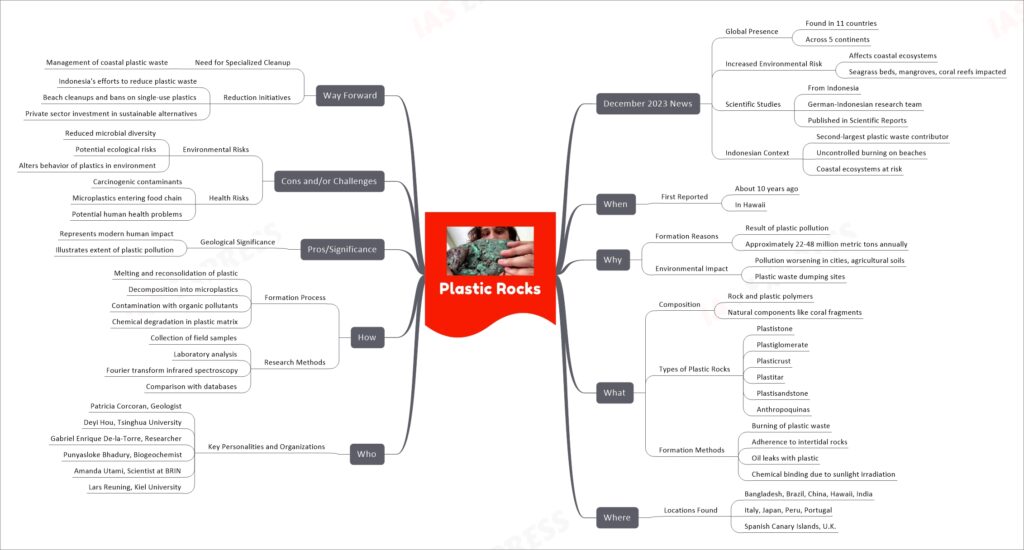Plastic Rocks
Summary:- Plastic rocks, a novel and alarming form of pollution, have been found globally, across 11 countries and 5 continents, illustrating the severe extent of plastic pollution. First reported about a decade ago in Hawaii, these rocks form from the combination of rock and plastic polymers, mainly due to human waste. Various types, including plastistone, plastiglomerate, and plasticrust, have been identified. They are often created through burning plastic waste or its adherence to rocks, among other methods.
This phenomenon poses significant environmental risks, including the degradation of coastal ecosystems and marine life due to microplastic formation and toxic chemical release. It also highlights the health risks associated with carcinogenic contaminants. The formation of plastic rocks represents a substantial ecological footprint of modern human activity.
Addressing this issue requires a specialized approach to manage coastal plastic waste. Indonesia, a major plastic waste contributor, is actively working towards reducing this impact through beach cleanups, single-use plastic bans, and sustainable alternatives. These efforts are crucial in mitigating the environmental and health risks posed by plastic rocks.


